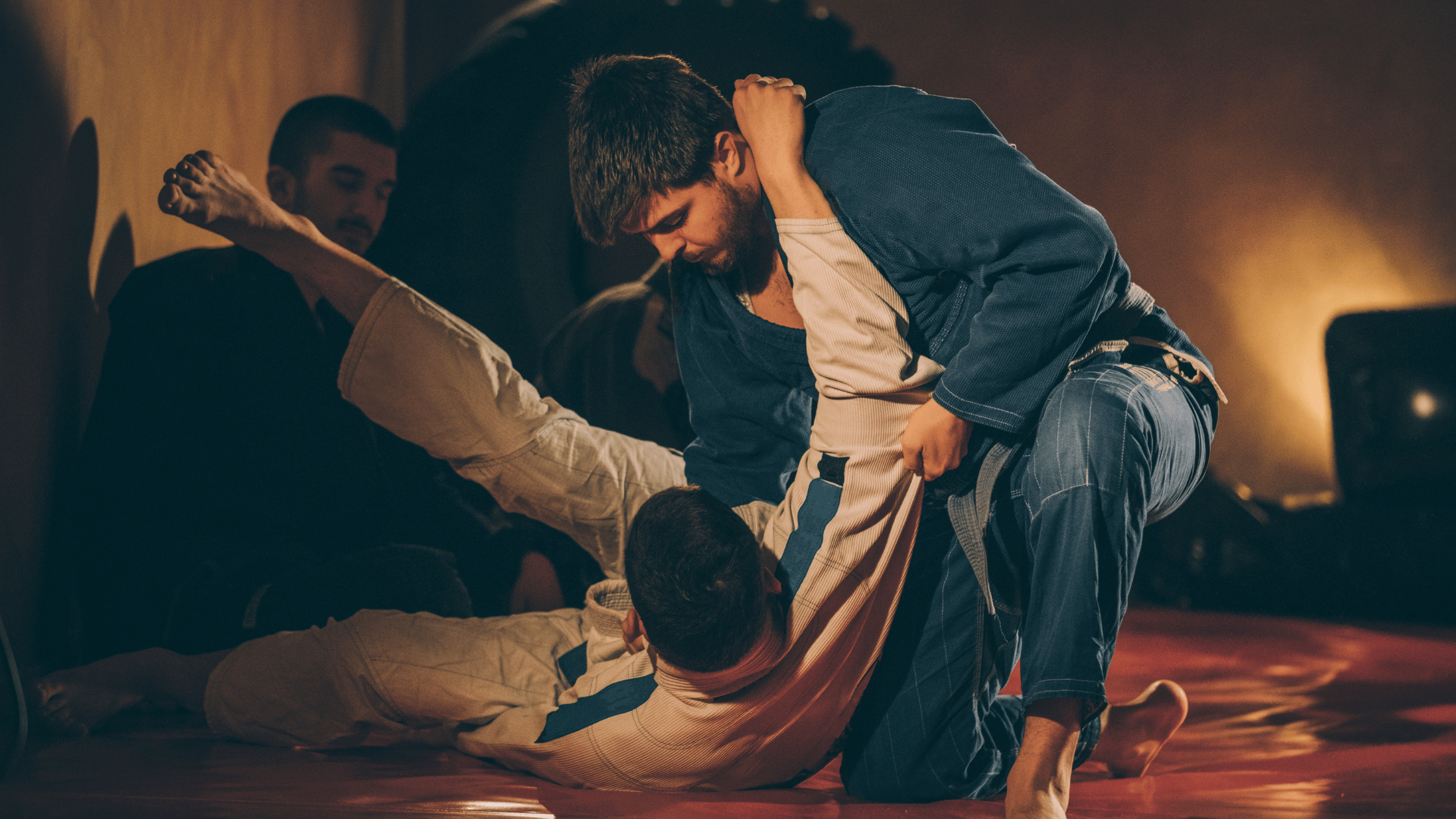Beginner’s Guide to Jujitsu as a Hobby: Unlocking Discipline and Technique
Embarking on the journey of Jujitsu as a hobby provides a unique blend of physical and mental training in martial arts. Often referred to as the “gentle art,” Jujitsu offers a comprehensive workout that not only builds strength and flexibility but also sharpens your problem-solving skills.
As you progress in your training, you will gain confidence, learn effective self-defense techniques, and tap into a supportive community.
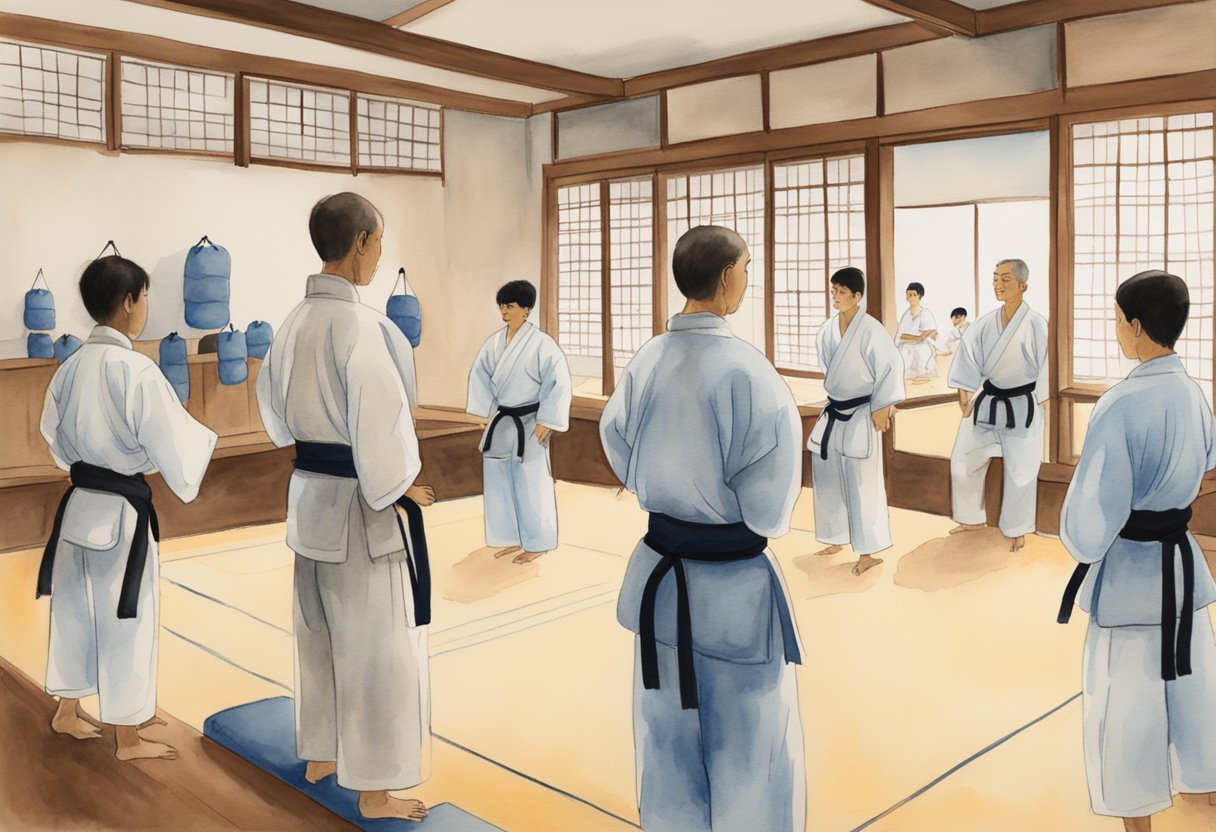
Jujitsu training involves mastering basic positions and techniques before advancing to more complex strategies.
Preparing for your first class could include investing in suitable attire, such as a gi, and familiarizing yourself with the BJJ belt system.
Progressing through the ranks from white to black belt will require dedication and consistent practice through drilling and sparring.
Making connections within the Jujitsu community can enhance your commitment to the sport and provide opportunities for competition and growth.
Whether you choose to compete or simply enjoy the practice, staying engaged and healthy is essential.
With a developed understanding of techniques and an ability to think strategically, Jujitsu will transform not only your physical abilities but also your mental agility.
Key Takeaways
- Engage with Jujitsu to boost confidence and self-defense skills.
- Master basic techniques and understand the belt system.
- Connect with the community and advance through consistent practice.
Understanding the Fundamentals of Jujitsu
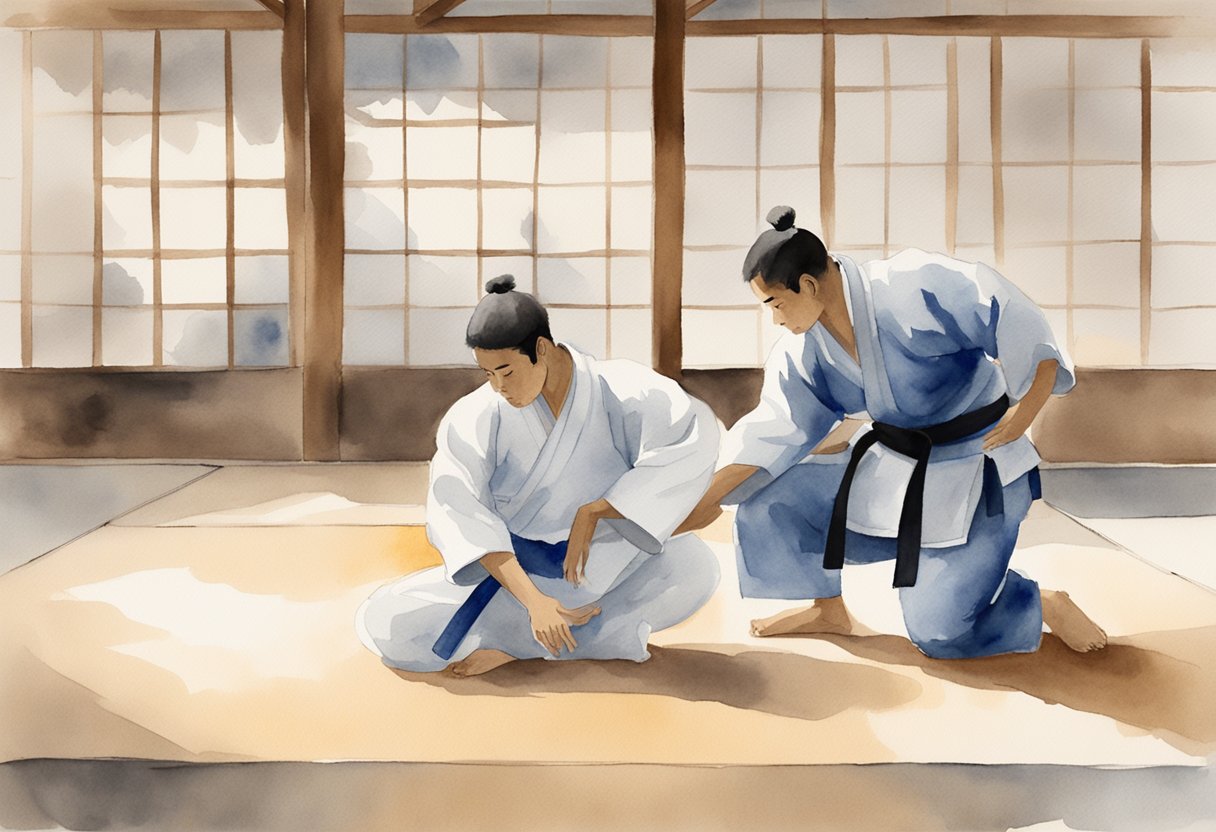
To grasp jujitsu’s essentials, consider its origins and philosophy, what distinguishes it from other martial arts, and the differences between gi and no-gi styles. These elements provide a comprehensive view of why jujitsu is both a practical and engaging hobby.
Origins and Philosophy
Jujitsu originated in Japan, emphasizing leverage and technique over brute strength. It evolved into Brazilian Jiu-Jitsu (BJJ), focusing more on ground fighting and submission holds.
This martial art is grounded in the philosophy of defending oneself by using an opponent’s force against them. It is often referred to as “the gentle art” because it prioritizes efficiency and strategic thinking over aggression, making it a versatile form of self-defense.
What Makes Jujitsu Unique Among Martial Arts
Unlike many martial arts, BJJ emphasizes ground combat and submission techniques rather than striking.
It is often practiced as a physical art and a mental challenge, requiring problem-solving to overcome opponents.
This focus on strategy and adaptability makes jujitsu distinct. It allows practitioners of all sizes and strengths to compete on equal footing, harnessing techniques that can subdue larger opponents effectively.
Different Jujitsu Styles: Gi and No-Gi
BJJ is practiced in two main styles: gi and no-gi.
The gi style employs a traditional uniform, allowing for a range of grips and techniques specific to the clothing.
On the other hand, no-gi jujitsu is practiced in athletic wear and emphasizes speed and agility, as the absence of grips requires different strategies.
Both styles offer various challenges and can significantly broaden your jujitsu skill set.
Preparing for Your First Class
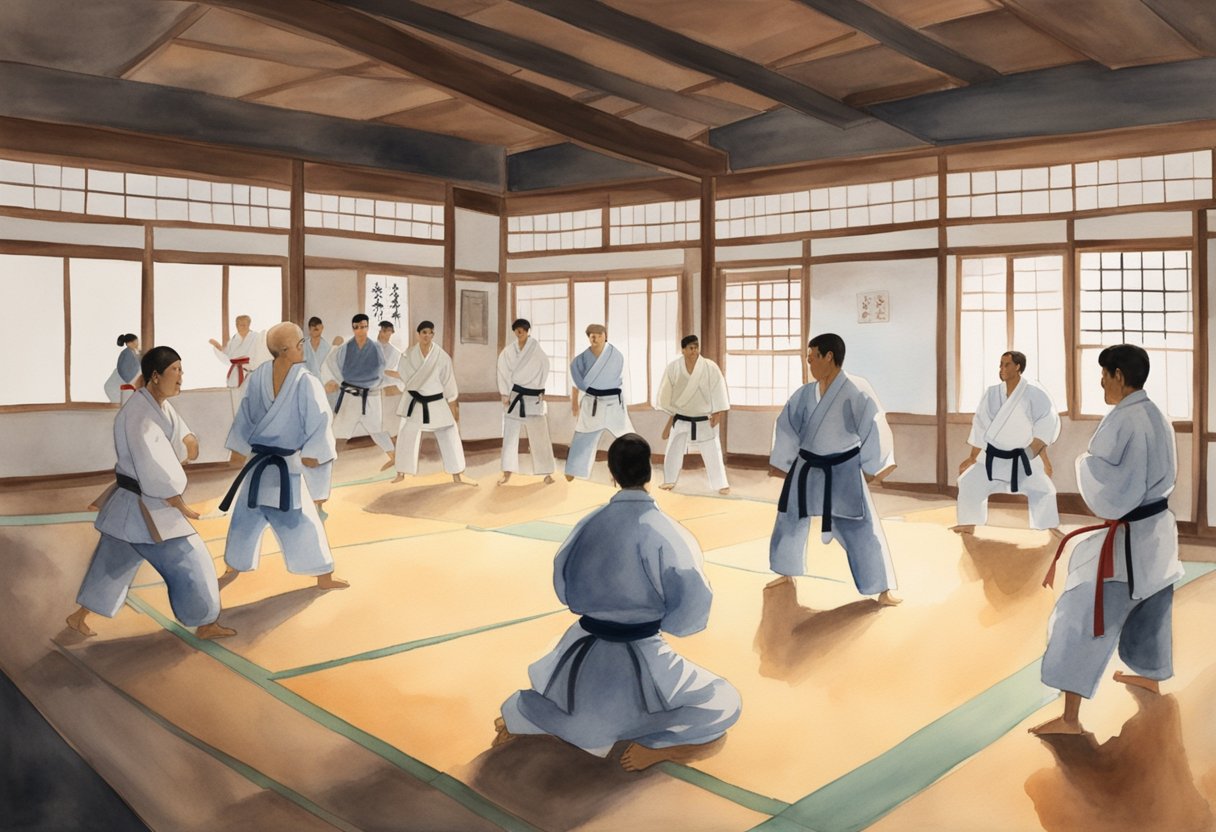
As you prepare for your first jiu-jitsu class, it’s important to focus on what to bring, how to choose the right gym, and the essential gear you’ll need. These aspects will help make your introduction to Brazilian Jiu-Jitsu smooth and enjoyable.
What to Bring to Your First BJJ Class
For your first class, bring a water bottle to stay hydrated, as jiu-jitsu is physically demanding.
Wear comfortable athletic clothing, like a rash guard, to minimize skin irritation and a pair of athletic shorts or pants without zippers or buttons, which can cause discomfort during grappling.
If you have one, a mouthguard provides an extra layer of protection against accidental bumps.
Make sure to bring a towel if your gym has shower facilities, allowing you to clean up afterward. Some gyms might offer loaner gis, but it’s best to confirm this ahead of time.
Choosing the Right BJJ Gym
Finding the right gym is crucial for your jiu-jitsu journey. Look for a gym with knowledgeable instructors who have experience in teaching beginners.
Visit a few gyms and observe classes to get a feel for the environment. It’s important to choose a gym where you feel comfortable and welcomed.
Many gyms offer a free trial class which allows you to get a sense of the teaching style and community. Check if the schedule aligns with your availability, and consider the location for convenience.
Essential Gear for Beginners
While some gyms lend gear to newcomers, it’s worth investing in your own essentials as you progress.
A quality rash guard protects your skin from mat burns and infectious agents.
A well-fitted mouthguard is essential to protect your teeth and gums during sparring sessions.
Over time, you’ll want to get a good jiu-jitsu gi, as this is necessary for most classes.
If you’re not sure where to start, instructors often have recommendations or discounts through their gym for purchasing quality gear.
Lastly, keep a durable water bottle on hand to stay hydrated throughout your training sessions. These items will ensure you’re prepared, comfortable, and protected as you start learning jiu-jitsu.
The BJJ Belt System and Ranking

Brazilian Jiu-Jitsu (BJJ) features a belt system that represents the different skill levels and progression stages. This system includes distinct belts such as white, blue, purple, brown, and black, each symbolizing a specific level of proficiency, discipline, and humility essential in BJJ.
Understanding the Belt Progression
The BJJ belt system consists of several levels, each indicating a different stage of mastery.
You start with the white belt as a beginner.
As you advance, you progress to the blue belt, where you gain confidence and deepen your skills.
The purple belt follows, known for technical refinement and strategic thinking.
Next is the brown belt, preparing you for the highest achievement, the black belt.
Each advancement reflects your dedication and growth in discipline and technique. The journey through these ranks is a testament to your commitment and progress in mastering Jiu-Jitsu’s complexities. It also emphasizes not just skill, but a deeper understanding of BJJ philosophies.
White Belt Fundamentals and Etiquette
The white belt stage is your introduction to BJJ, focusing on fundamental techniques and etiquette.
As a white belt, you learn essential skills like basic chokes, guards, and transitions that form the foundation of more advanced techniques.
Etiquette is crucial at this level, centering on respect, humility, and discipline.
You should show respect to instructors and peers, as well as maintain a clean uniform and positive attitude.
Understanding and adhering to gym rules showcases your commitment to both personal growth and the BJJ community.
This stage is not only about acquiring skills but also about embracing the culture and values that underpin Brazilian Jiu-Jitsu.
Key Jujitsu Techniques and Positions
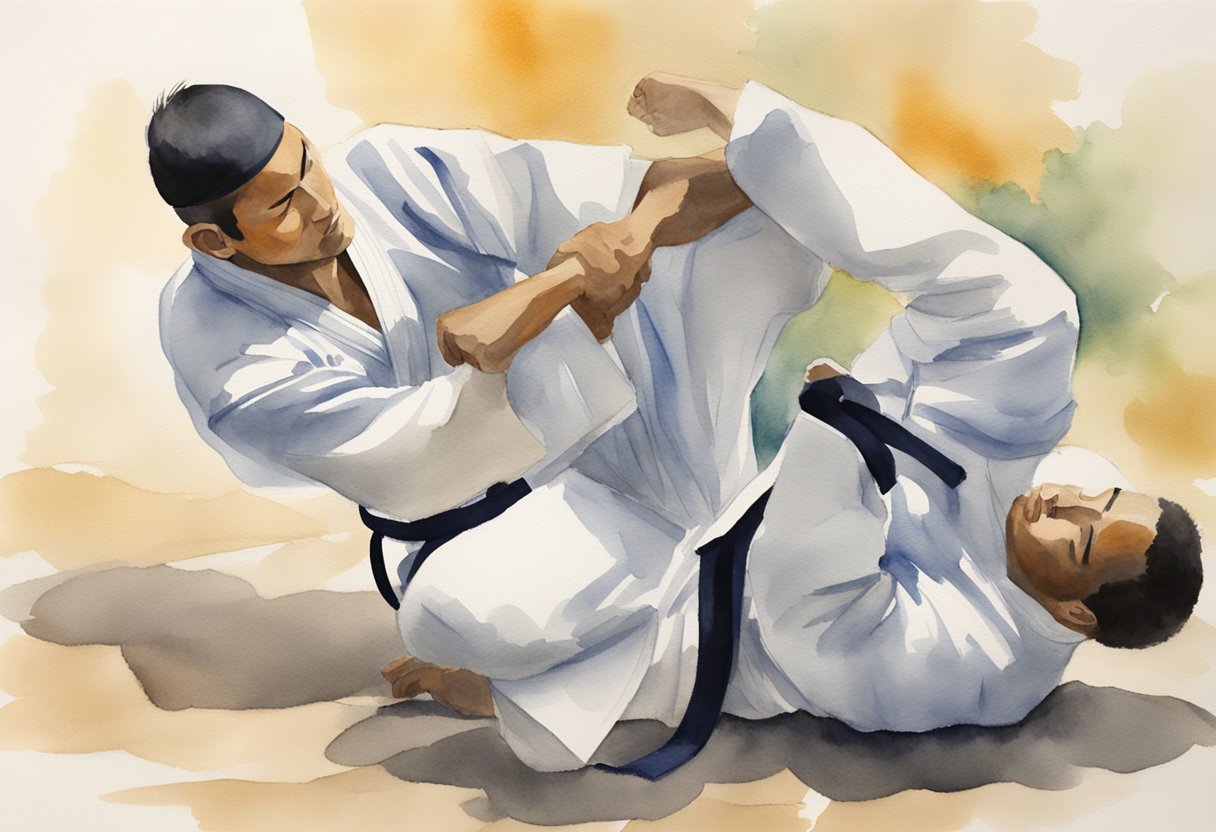
In your journey to mastering Jujitsu, understanding key techniques and basic positions is crucial. This includes mastering defensive and offensive maneuvers from positions such as the guard, mount, and side control.
Mastering Basic Techniques and Positions
Begin with familiarizing yourself with fundamental positions like mount, side control, and back mount.
From these positions, you can execute effective takedowns and submissions.
Each position offers unique opportunities for control and attack.
For example, in mount, you are on top with an advantageous position to apply pressure and submissions.
In side control, stabilize your position to limit your opponent’s movement. This position enables transitions to other dominant positions or submission setups.
Takedowns play a critical role in Jujitsu, helping you establish control quickly.
Practice these with attention to detail to improve your overall grappling game.
The Role of Guard in Offense and Defense
Guard is a foundational position where you’re on your back with your legs engaged as defensive barriers. It’s vital for both defending and launching attacks, evident in its classification in various BJJ systems.
When in a closed guard, your legs are wrapped around your opponent, offering both control and offensive opportunities like chokes and arm locks.
An open guard, meanwhile, allows more mobility, leading to sweeps and setups for submissions.
Mastering guard involves learning transitions and defenses that enable you to switch between offensive and defensive strategies seamlessly.
Practicing guard will sharpen your skills in maintaining control over your opponent, no matter your position.
Achieving and Maintaining Dominant Control
Achieving dominant control in Jujitsu means positioning yourself advantageously over your opponent. Positions like back mount and mount are crucial for this.
In back mount, you have your opponent’s back with hooks in. This offers significant control and opens up submissions like choke holds.
Meanwhile, side control provides strategic opportunities for transitioning to mounts or setting up submissions.
Your ability to maintain dominant control stems from persistent practice and a keen understanding of body mechanics. This ensures you can effectively manage your opponent’s movements, limiting their opportunities for counterattacks.
Drilling and Sparring: Practice Makes Perfect
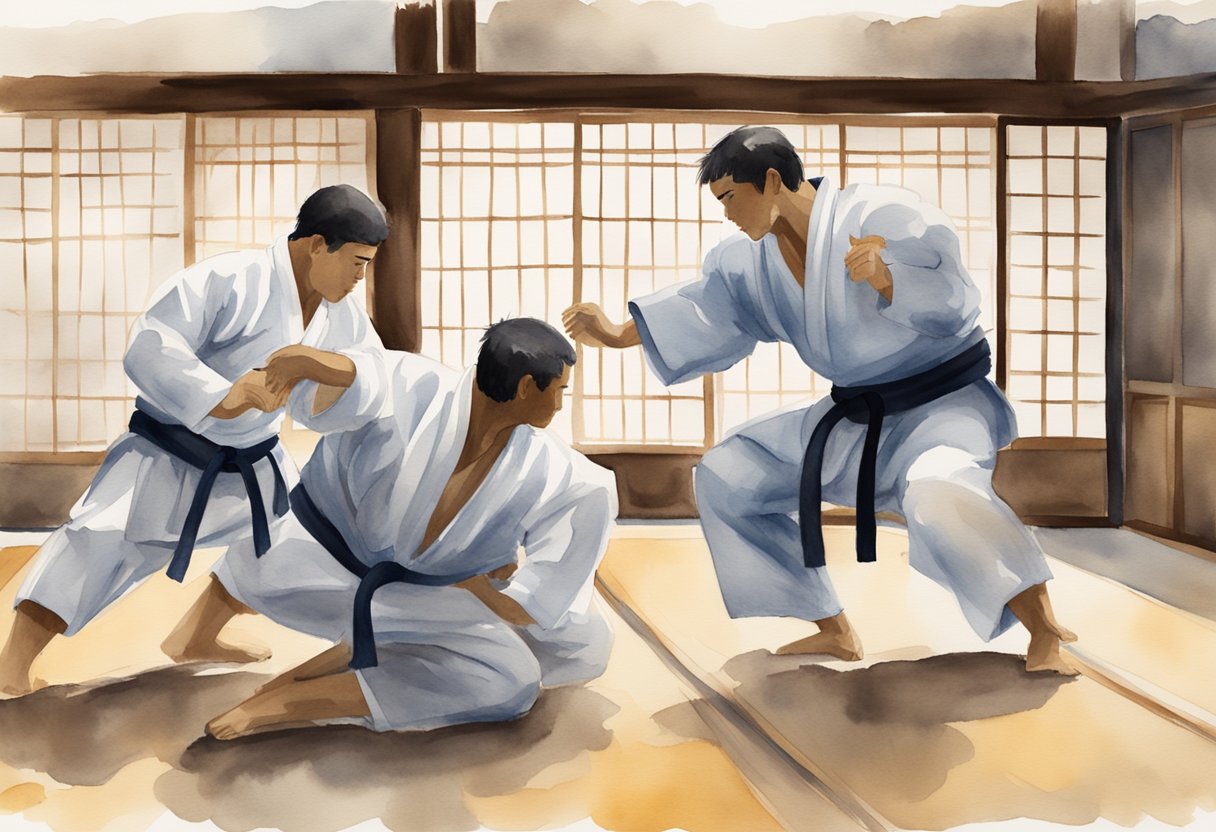
Developing competence in jiu-jitsu involves honing techniques and applying them in real scenarios. Drilling sharpens skills by repetition, while sparring provides a realistic setting for testing those skills.
Drilling Techniques for Skill Enhancement
Drilling is essential for perfecting jiu-jitsu techniques.
You’ll engage in repetitive practice of moves, like submissions and sweeps, with a focus on precision and muscle memory.
This process helps you internalize these techniques, allowing them to become second nature.
Incorporating rolling drills can further enhance your practice.
Rolling allows you to execute techniques within a dynamic, fluid environment, enhancing your timing and reflexes.
Remember to practice consistently to reinforce skills effectively.
The Importance of Sparring Sessions
Sparring sessions are critical for applying what you’ve practiced in drills against a resisting opponent.
These sessions simulate real combat situations, enabling you to gauge your readiness and adaptability.
Through sparring, you will experience varied scenarios, such as defending against sweeps and executing submissions.
A well-rounded sparring practice helps improve your decision-making skills under pressure.
It encourages you to respond effectively, strategizing in real time.
Regular sparring also provides an opportunity to refine your techniques and learn from mistakes.
By participating in sparring, you build both confidence and proficiency in jiu-jitsu.
Advanced Strategies and Submissions
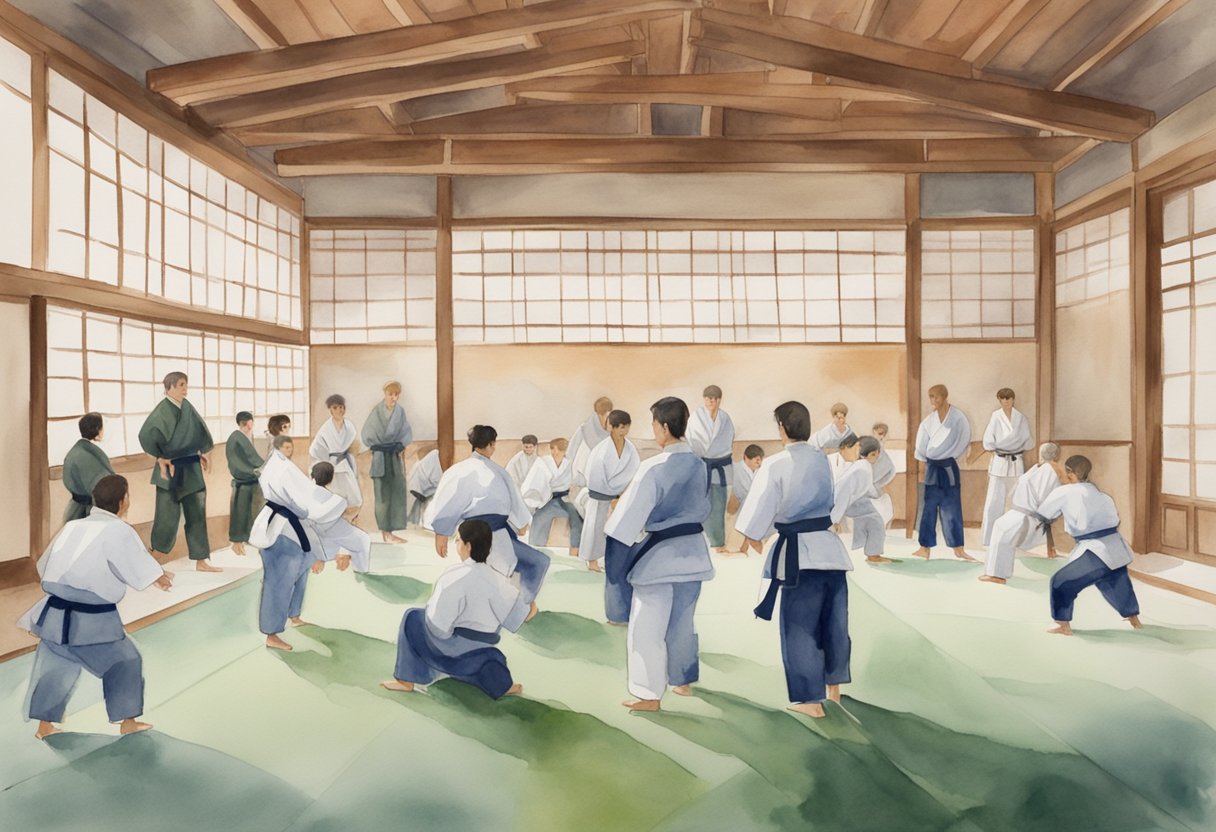
In this section, you will explore advanced Brazilian Jiu-Jitsu techniques focusing on sophisticated submissions and personalized strategies.
Emphasizing leverage and precision can significantly enhance your effectiveness on the mat.
Exploring Complex Submissions and Setups
Mastering complex submissions requires understanding the interplay of movement and positioning.
Techniques like the triangle choke and rear naked choke are not just foundational; they offer pathways to more intricate setups.
For instance, transitioning from a rear naked choke to an armbar can catch your opponent off-guard, making your approach unpredictable.
Similarly, employing the kimura can provide opportunities for sweeps or to secure a dominant position.
Learning to use your hooks effectively allows you to control your opponent’s movement, setting up submissions while maintaining a strategic advantage.
Develop the ability to anticipate your opponent’s reactions to enhance your transition fluidity between different attacks.
Practicing these advanced setups can significantly elevate your skills.
Developing Your Own BJJ Game Plan
Creating your own game plan involves identifying techniques that best suit your physical attributes and fighting style.
Focus on integrating both solid submissions and dynamic sweeps.
For example, if you excel at using leg positions to control, work on submissions like the triangle choke that capitalize on these qualities.
Experiment with different combinations of submissions, such as linking the kimura with an armbar.
Understanding how to seamlessly blend these techniques can make your game more unpredictable.
Incorporate drills that simulate real sparring scenarios to refine your strategy and improve decision-making under pressure.
Developing a personalized approach to your BJJ practice will significantly benefit your growth in the sport.
The Mental Game: Strategy and Problem-Solving
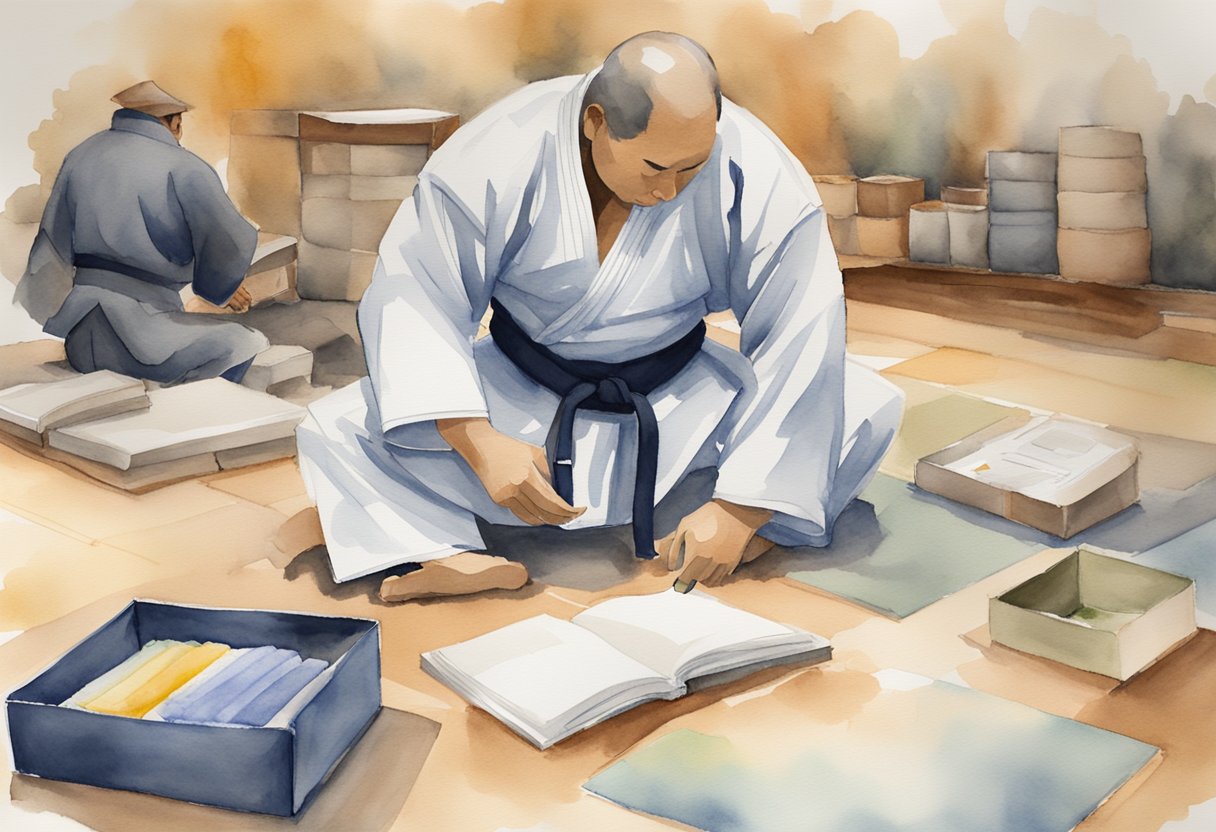
Engaging with Brazilian Jiu-Jitsu enhances your mental acuity by merging strategic thinking and adaptive problem-solving. This combination sharpens your mind, offering mental benefits and stress relief in your practice.
Applying Chess-like Thinking to Grappling
In Brazilian Jiu-Jitsu, strategic planning is crucial, much like chess. Each move on the mat requires anticipation of your opponent’s reactions, demanding a forward-thinking mindset.
Emphasize positioning and leverage to maneuver your opponent and maintain control.
Adopting a structured approach to grappling, you learn to plan several moves ahead. This foresight helps you develop resilience and adaptability, fostering mental dexterity.
As you refine these skills, you gain confidence in your abilities both on and off the mat.
Cultivating Problem-Solving Skills on the Mat
The dynamic environment of Brazilian Jiu-Jitsu is a continuous problem-solving exercise.
You analyze your opponent’s moves and craft responses that capitalize on their weaknesses.
This strategic thought process hones your ability to remain calm under pressure.
Training in this martial art helps you tackle challenges with a clear and focused mind.
The mental benefits extend beyond the dojo, enhancing everyday decision-making and mental clarity.
With practice, you improve your analytical skills, learning to view problems from multiple angles and crafting strategic solutions quickly and efficiently.
Staying Safe and Healthy
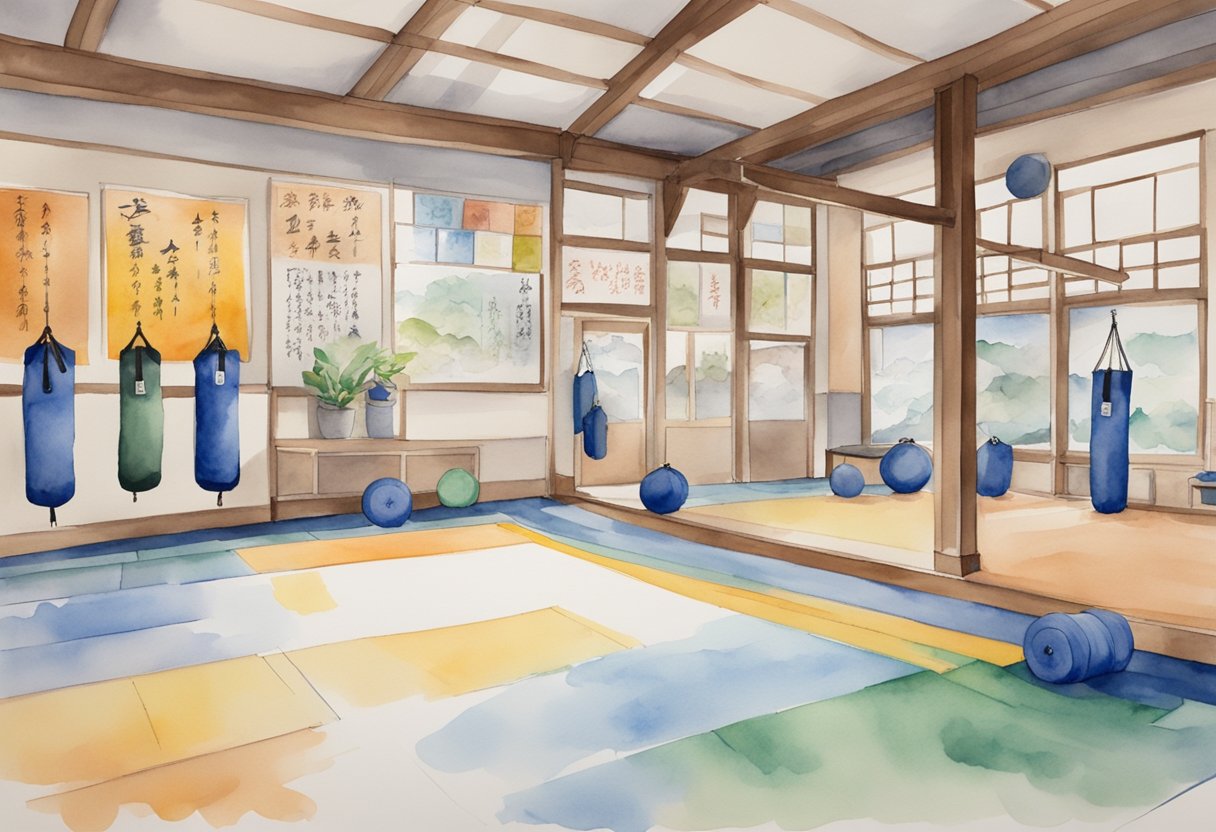
Jiu-jitsu is a challenging and rewarding martial art that requires attention to both safety and wellness. By focusing on injury prevention and maintaining a solid foundation of fitness and nutrition, you can enhance your overall experience and performance.
Injury Prevention and Safety Tips
Injuries in jiu-jitsu can be minimized by adhering to several key safety practices.
One effective strategy is to learn to tap out early and frequently. This practice reduces the risk of injury when caught in a submission hold.
Communicate clearly with your training partners about any discomfort.
A proper warm-up routine is essential before starting any training session.
Focus on dynamic stretches and exercises that target muscles used in grappling. This prepares your body and reduces the likelihood of strains or sprains.
Always wear appropriate gear, such as a mouthguard and supportive clothing, to further protect yourself.
Awareness of your surroundings on the mat can also help prevent accidents.
Stay mindful of other practitioners to avoid collisions and ensure a safe training environment for everyone involved.
Fitness and Nutrition for Jiu-jitsu Practitioners
Maintaining good physical fitness supports your performance on the mat and reduces the risk of injuries.
Incorporate a balanced routine that includes cardiovascular exercises, strength training, and flexibility work. This helps build endurance while improving overall agility.
Nutrition plays a crucial role in supporting your health and performance.
A diet rich in lean proteins, complex carbohydrates, and healthy fats provides the energy necessary for intense training.
Stay hydrated by drinking plenty of water throughout the day, particularly before and after training sessions.
Incorporate rest days into your schedule to allow for muscle recovery and repair.
Listening to your body’s signals is key to maintaining long-term health and enjoyment in jiu-jitsu.
Getting Involved in the BJJ Community
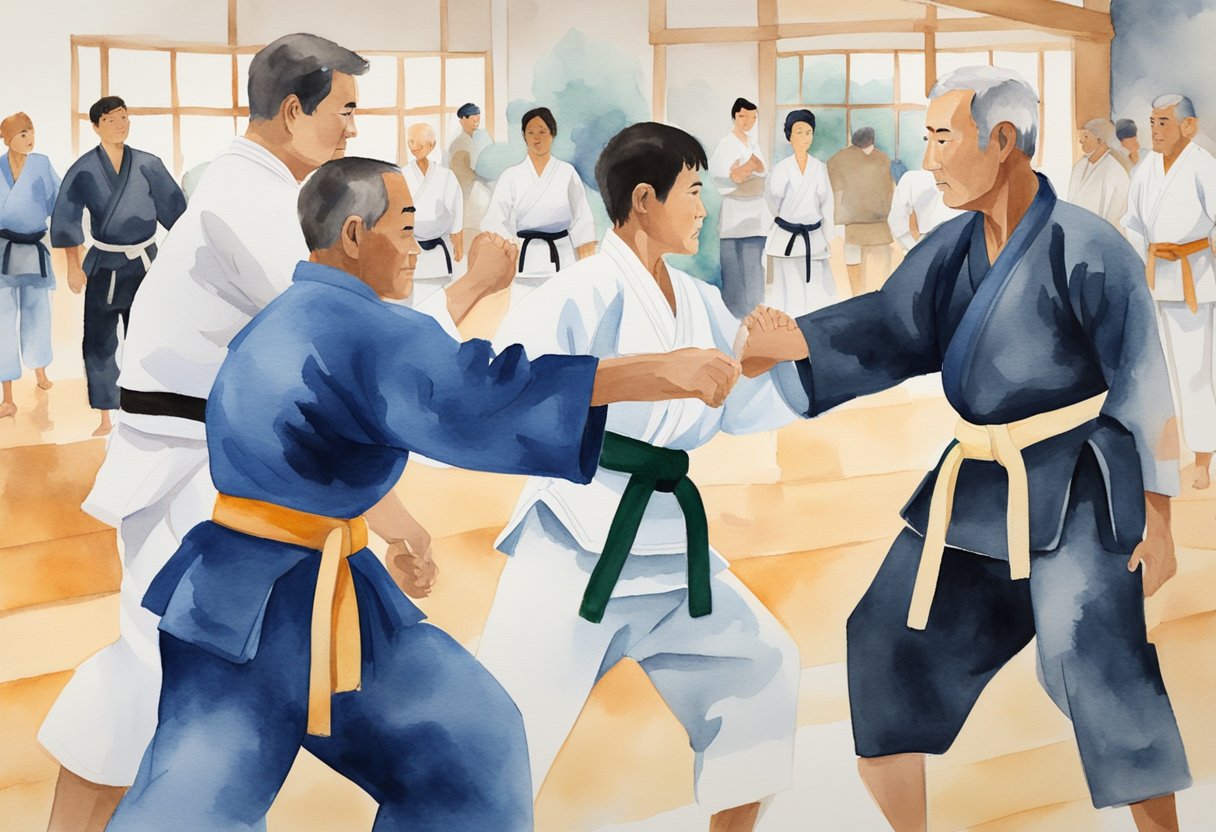
Engaging with the Brazilian Jiu-Jitsu (BJJ) community enhances your training experience and provides valuable support. Making meaningful connections and understanding the culture of respect and camaraderie are central to this process.
Finding Your Place and Making Connections
Start by choosing a local BJJ gym that aligns with your schedule and personal goals.
Engaging regularly helps establish a presence and familiarizes you with various training styles.
Many practitioners find that attending 3-4 classes weekly can boost skill levels effectively. If that isn’t possible, try to engage deeply during fewer classes.
Socializing is essential too. Forge friendships by participating in post-class hangouts or events organized by the gym.
This shared passion often translates into lasting bonds.
Searching for “BJJ near me” can help identify nearby gyms where you can begin this journey.
Being open and approachable encourages others to reach out, creating a friendlier training environment.
Respect and Camaraderie On and Off the Mat
Respect is foundational in BJJ, extending beyond the technical aspects to interpersonal interactions.
Acknowledge everyone’s effort and practice being a good training partner.
Celebrate small victories and provide constructive feedback to your peers.
This supportive attitude enriches your experience and reinforces community ties.
Off the mat, respect involves adhering to gym etiquette and showing appreciation for your coaches’ guidance.
Engage with online BJJ forums and social media groups to discuss techniques and gain diverse perspectives.
Remember that respect is reciprocal, and fostering a positive environment benefits everyone involved.
Participating actively in community events further solidifies your role within the BJJ community.
Competition and Progress
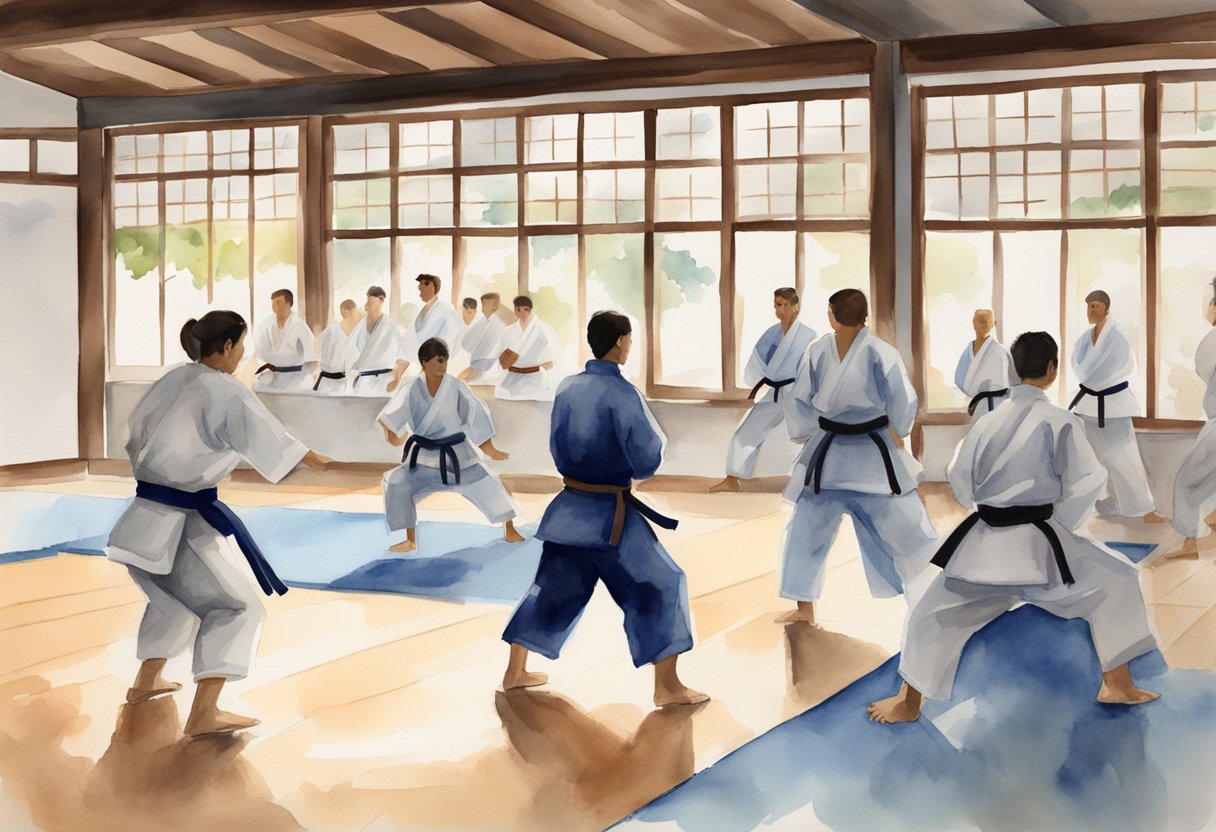
Engaging in Brazilian Jiu-Jitsu (BJJ) competitions can significantly enhance your skills and understanding of the sport. Competitions not only measure your progress but also provide a platform to implement advanced techniques against peers.
Preparing for BJJ Tournaments
Preparation for a BJJ tournament involves multiple aspects.
First, ensure your equipment, like your gi and belt, meets the necessary uniform requirements. A well-fitted gi can make a difference in your performance.
Simulate competition scenarios in your training by practicing under pressure. This can help you acclimate to the tournament environment.
Mental readiness is crucial. Cultivate mental toughness alongside physical training.
Visualization and meditation techniques can be effective in managing nerves.
Knowing the rules and scoring system of the particular tournament is essential. Each competition may have specific regulations, so understanding them can give you a strategic edge.
Setting Goals and Advancing in Skill
Set clear, achievable goals for your BJJ journey.
Whether it’s mastering a specific technique or reaching a new belt level, having objectives can guide your training focus.
Goal setting aids in measuring progress.
Attend 3-4 classes per week, depending on your schedule and commitment level, to see consistent improvement. If possible, stay after class for additional practice time.
Consistent practice and feedback from instructors are key.
Utilize video analysis of your matches to identify strengths and weaknesses.
Focus on learning advanced techniques only when you have a strong foundation in basics.
Tracking your progress in a journal can be beneficial, helping you stay motivated and aware of your development over time.
Frequently Asked Questions
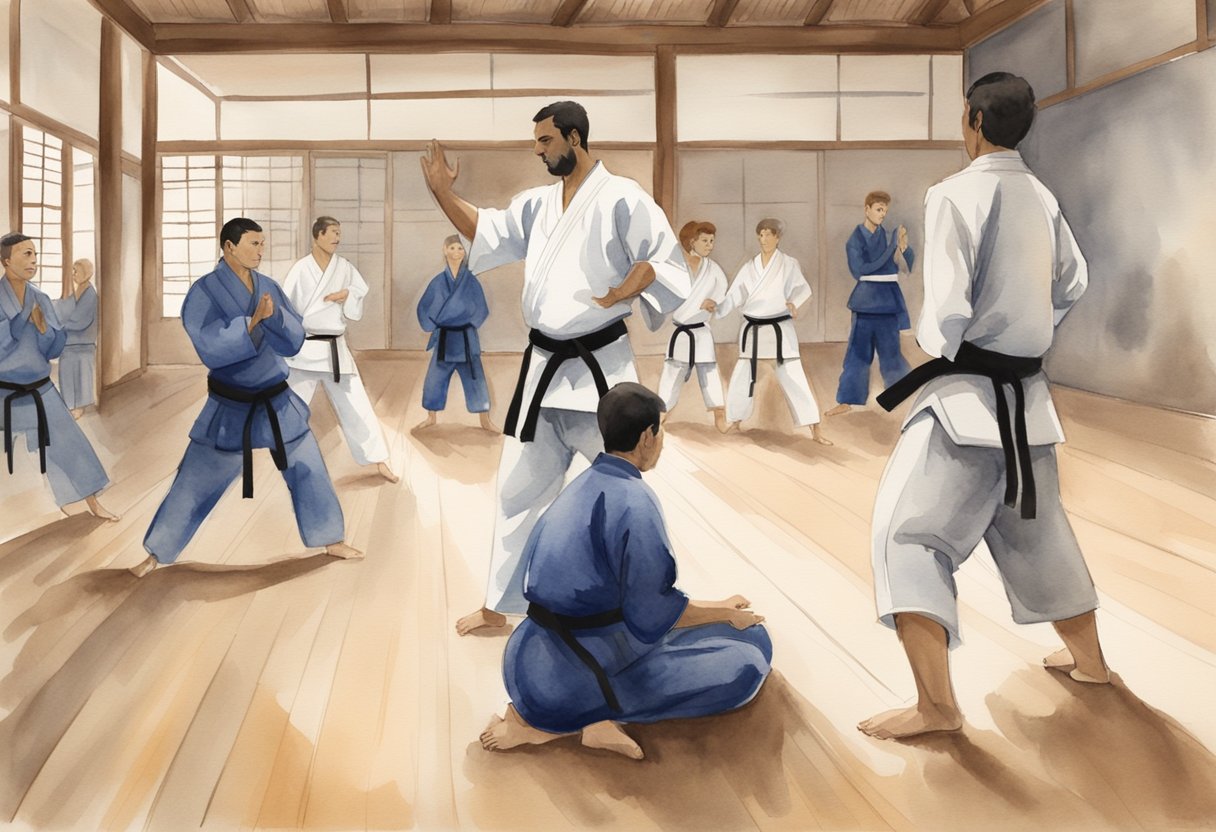
Embarking on a journey in jiu-jitsu involves understanding key techniques, selecting the right classes, and determining training frequency. It is crucial to know if age affects your ability to start and how effectively you can learn at home.
What are the essential techniques for beginners starting in jiu-jitsu?
As a novice, you should familiarize yourself with foundational positions such as the guard, mount, and side control. These techniques form the backbone of jiu-jitsu and will set the stage for learning advanced movements.
What should one look for when choosing a beginner jiu-jitsu class?
Seek classes with experienced instructors who focus on beginner-friendly instruction. Pay attention to the class size, as smaller ones often allow for more personalized guidance. Consider the atmosphere—supportive and welcoming environments enhance the learning process.
Can someone learn jiu-jitsu effectively at home, and if so, how?
While many core skills require partners, you can practice solo drills to improve agility and understanding of movements.
Watching instructional videos and using grappling dummies can supplement your learning outside of formal classes.
Visit this guide for more tips on self-training.
What are the basic jiu-jitsu moves a beginner should focus on?
Concentrate on mastering the armbar, triangle choke, and hip escape. These fundamental techniques are crucial for establishing control and defending against opponents, making them invaluable to your skill set.
Is there an age limit for starting training in jiu-jitsu?
Generally, there is no strict age limit, as people of all ages can begin training. Many gyms have programs catering to children, adults, and seniors. Assess your physical health and consult a physician if you’re unsure about starting.
How often should a beginner attend jiu-jitsu training sessions?
A beginner should aim for attending classes 2-3 times a week. This frequency allows them to build muscle memory without overexertion. It also ensures consistent progress in grasping new techniques efficiently.

